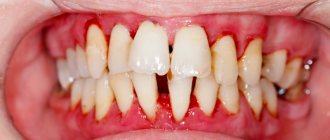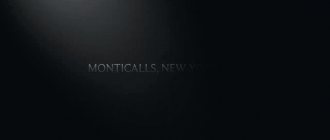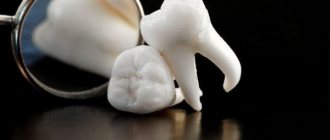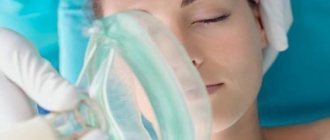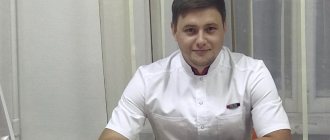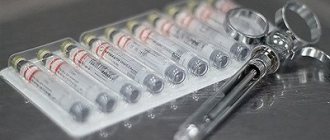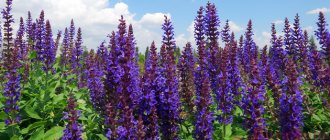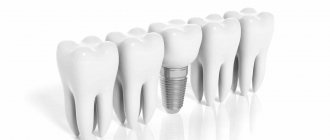- home
- For patients
- Articles
- Treatment of periodontitis with medicinal leeches
Periodontitis is a fairly widespread disease in which periodontal tissue becomes inflamed.
It brings very unpleasant sensations and reduces the quality of life: bleeding and swelling of the gums, loosening of teeth, pain when biting and chewing food. Naturally, the first thing you need to do is urgently contact a specialist at the clinic. After examination, the doctor will select the correct treatment. It can be traditional:
- special medicated toothpastes;
- medicines;
- massage;
- lotions and rinses;
- medical teeth cleaning;
- physiotherapy.
And it may be unconventional, but very effective and widespread nowadays.
Periodontitis
Treatment of gums with leeches - my 100% result
What was the treatment and what did not cure it?
100% guarantee of cure for periodontitis!
Tried, tested, analyzed and approved! Periodontitis is an inflammatory disease of the gum tissue that surrounds and supports the tooth (periodontal). I didn’t post photos from the Internet illustrating this disease, because... the picture is unpleasant to the eye. In general this manifests itself:
- bleeding gums when biting hard food,
- swelling,
- significant formation of dental calculus,
- softening of gums and loosening of teeth…….
A lot has been written on the Internet about this disease. Most doctors talk about possible causes and, accordingly, possible methods of treating it. Interestingly, doctors believe that one of the reasons is the lack of the proper amount of solid food in the diet and, therefore, the lack of stress on the gums (a kind of physical activity for them). So people with gum problems need to switch to healthy plant-based and raw foods.
In reality, treatment in a dental clinic takes place in several directions:
- removal of dental plaque (relief from “tartar” that is pressing and interferes with blood supply)
- cleaning teeth for disinfection
- physiotherapy to restore blood supply to the gums
- applying applications with various ointments and compositions to strengthen tissues
- injections of B vitamins and drugs that relieve inflammation.....
The scheme described above is the most primitive and any dentist will throw stones at me, telling me what progressive methods of treatment are already in service with doctors. I agree.
But these methods cost good money. Once. And these methods are temporary. Two. They last for half a year or a year. And then all over again.
Of course you can support it this way. Undoubtedly. But there is an absolutely radical remedy. And her name is LEECH.
Leech on the gum - and the problem is gone
I understand how many of you grimaced and were indignant... But health is more valuable than our subjective feelings.
What does a hirudotherapist do (hirudotherapy is a method of treatment using medicinal leeches) when he performs the procedure for treating periodontitis with leeches? It places leeches on problem areas of your gums. The leech pumps out “bad” blood and injects hirudin, which thins the blood. As a result, in 5-6 sessions the blood supply is restored and inflammation completely goes away, bleeding of the gums and the terrible consequences of periodontitis in the form of tooth loss are not scary for you.
In the practice of my friends, after a repeated preventive course after half a year, the problem of periodontitis goes away completely. Experience says that for 5-10 years, no symptoms of this disease appear. It is even possible to treat periodontal disease with leeches. Leeches for periodontal disease may not bring such a clear and strong effect as for periodontitis, but the fact that there will be progress in treatment is certain.
Deciding on hirudotherapy is difficult for many.
But if you read more about these amazing creatures and understand that leeches are extremely clean creatures raised in licensed medical institutions, then you will understand: leeches are wonderful healers!
Treatment methods
Proper treatment of a dental cyst largely depends on the causes of its appearance and the clinical picture. It becomes clear after a visual examination, orthopantomography, and testing. Procedures must be done before any surgical intervention to understand the exact location of the inflamed area. Every dentist tries to avoid removing a dental cyst using a scalpel or laser. If possible, conservative treatment of the dental cyst is carried out to stop the spread of inflammation over large areas. It includes opening the element, cleaning, antiseptic treatment and filling the canals. Therapy is accompanied by the use of antibiotics, vitamins and other medications. If the need to remove a dental cyst is obvious, different surgical techniques are used.
- The use of laser is the most popular method of combating cystic inflammation. The procedure allows the patient to experience minimal pain, promotes rapid healing, and produces successful results in almost all cases.
- Hemisection – removal of the tooth cyst along with the roots. Used for severe damage to the internal structure. Then the element is restored using prosthetics or implantation.
- Cystectomy – the contents of the purulent sac are removed through an incision, the cavity is cleaned and the surrounding areas are sanitized. After stitches are applied, the pain goes away and the disease disappears.
- Cystomy is the removal of part of a large dental cyst. After thorough cleaning and antiseptic procedures, an obturator is left - a barrier that prevents the affected tissues from growing together. Soon the disease recedes.
How a cyst is treated is shown in this video
ATTENTION! Under no circumstances should you self-medicate at home. Some patients try to squeeze out the abscess on their own. This will only lead to short-term relief; the cause will remain in the root system. After some time, the inflammation will make itself felt again. In any case, you will have to go to the clinic, since removing a dental cyst is a complex operation, often performed under general anesthesia, which can only be performed by a professional.
Treatment with medicinal leeches at the Dial-Dent clinic, indications for hirudotherapy
At the Family Dental Clinic, hirudotherapy is used in the cosmetology department.
Indications for the use of leeches in cosmetology:
- face lift;
- relieving swelling on the face and body;
- skin rejuvenation on the face and entire body;
- reduction of wrinkles;
- reducing acne scars so that they heal faster and are less noticeable;
- correction of cosmetic intervention (reducing the consequences of excessive administration of hyaluronic acid);
- treatment of varicose veins.
Medical leeches can be placed on the face and body. Depending on the location and the problem being solved, leeches of different sizes are selected. Microleeches (about 1 centimeter) are placed on the face, medium-sized leeches are placed on the body, large leeches are used for large problem areas on the body.
Depending on the indications, leeches are applied 1-2 times a week. The standard course of hirudotherapy is 10 sessions.
Cosmetologist Pavel Olegovich Kusin, who practices hirudotherapy at Dial-Dent, was trained at the Hirudocenter and has more than 5 years of experience in treatment with medicinal leeches. In addition to leeches, Pavel Olegovich uses the most modern technologies and drugs. The combination of different approaches in cosmetology makes it possible to obtain maximum effect and health benefits.
How does the operation take place?
Removing a dental cyst at any stage is a serious procedure that requires comprehensive preparation. It is not without reason that several doctors of different specialties often participate in its implementation, who together make a diagnosis and choose the optimal way to eliminate the problem. Important assistants are test results that help accurately determine the location of the affected area and identify possible adverse reactions of the patient to local or general anesthesia. Anesthesia when removing a dental cyst is the most important stage, allowing the client not to experience pain and the doctor not to worry about the visitor’s condition. After studying the analysis data, 2-3 days before the procedure, a comprehensive treatment of the element is carried out, including filling, sanitation and other preparatory measures. They allow you to avoid future relapse, which entails the need for re-treatment of the dental cyst. The operation itself, as a rule, is carried out according to a single algorithm, including several stages.
- Since the duration of the procedure is short, it is performed mainly under local anesthesia. Modern anesthetics allow the patient not to experience discomfort.
- After an incision is made in the gum using a special spacer, the mucous membrane peels off, exposing the bone. The boron creates a channel leading to the top of the element.
- Direct extraction of the affected part of the root with a cystic sac. Tweezers or a special surgical spoon are used.
- To fill the resulting voids, biomaterial taken from the patient and processed in a centrifuge is used. It accelerates tissue regeneration and helps healing.
- The incision site is stitched with threads, the outer area of the face is fixed with a bandage or splint. Ice compresses are recommended to relieve pain and reduce bruising.
INTERESTING! The procedure for resection of the root apex when removing a dental cyst lasts no more than 40–45 minutes. That is why the use of general anesthesia is undesirable - the patient may sleep for a long time after the operation. The exact dosage of an anesthetic injection, which is given directly to the affected area, is the prerogative of the anesthesiologist. A pro in anesthesia is valued today no less than a maestro in surgery. It is curious that the treatment of cysts in the anterior teeth is easier and faster than a similar manipulation on the lateral elements.
What are the benefits of leech treatment?
A hirudotherapy session lasts from 15 minutes to 1 hour.
Leeches are applied by a specialist to the appropriate areas of the skin. They find a place for a bite, after which they make “punctures” up to 1.5 mm deep and suck out 5–15 ml of blood, while simultaneously introducing various biologically active substances into the human body, thanks to which, in particular, bites practically do not cause any discomfort to the patient . Up to 80% of the active substances accumulate in the area of influence, so leeches are applied as close as possible to the affected area. During a session, up to 7 leeches are used. The course of treatment ranges from 5 to 7 sessions. The therapeutic effect of hirudotherapy is explained by three main factors:
- mechanical effect (reducing the load on regional blood flow);
- influence on the body of biologically active substances;
- reflex action on active points.
Leeches prefer to be located on biologically active points of the body, due to which their bites act as acupressure, so that hirudotherapy in its effect on the body is partly similar to acupuncture.
Research into the composition and properties of leech saliva began in the 20th century. Today it is already known in sufficient detail how the substances contained in it affect the human body:
- hyaluronidase improves tissue permeability and helps reduce swelling;
- hirudin reduces blood clotting;
- a histamine-like substance increases blood flow to the bite site;
- bdellins and eglins are natural inhibitors of proteolytic enzymes and help eliminate inflammatory processes;
- the destabilase complex has an antithrombotic effect;
- neurotrophic factors cause the growth of nerve cell processes, which makes the use of hirudotherapy effective after a stroke and in patients with cerebral palsy.
Signs of illness
As already noted, diagnosis of the disease at first is made difficult by the sluggish nature of the pathology. It may not cause any inconvenience and may not hint in any way at the possibility of removing the dental cyst. Therefore, it is so important to regularly visit a dentist, who, with an experienced eye and using modern instruments, can determine the presence or absence of an inflammatory process. Understanding whether a dental cyst needs to be treated or not can be clearly determined by a panoramic image - one of the most powerful diagnostic tools of modern dentistry. On the disk or printout, the purulent cavity is clearly visible. The symptoms of the pathology can be different: even increased fatigue or nervous agitation, which many are accustomed to attributing to ordinary fatigue, may indicate the presence of a neoplasm and the need to remove a dental cyst. Among the signs of the disease that directly indicate the presence of a purulent focus, it is worth highlighting the following factors:
- increased sensitivity to cold and hot;
- frequent severe headaches, especially in the temporal region;
- unpredictable changes in body temperature;
- discomfort when touching the gums with the tongue;
- pain when pressing and chewing even non-solid food;
- the appearance of slight swelling on one or both sides.
IMPORTANT! If you pay attention to at least one of the listed signs, there is a chance to treat a dental cyst without surgery. With therapy you can achieve excellent results. Early detection of pathology will allow painless elimination of the disease. Therefore, if you have the slightest suspicion, do not delay your visit to the clinic.
Contraindications for hirudotherapy
Hirudotherapy also has some contraindications, but there are very few of them. People suffering from hemophilia, congenital incoagulability and severe anemia, which causes a decrease in the number of red blood cells in the blood, should not be treated with leeches.
Contraindications for such treatment are also hemorrhagic diathesis, pregnancy, and persistently low blood pressure. Some people may have both
individual intolerance to one of the components contained in the secretion of the salivary glands of the leech.
TREATMENT METHODS WE USE
- hirudotherapy - applying a leech locally, according to indications;
- hirudoreflexotherapy - applying a leech to biologically active points and chakras;
- hirudotherapy + medical cupping - hirudotherapy followed by application of a medical cup to the working areas;
- hirudotherapy + autohemotherapy - hirudotherapy followed by intradermal injection of autologous blood extracted from a leech.
The specialist selects the duration of the hirudotherapy course individually for each patient. Typically, to achieve maximum results, you need to complete 7-10 sessions. It is best to carry them out 1-3 times a week. Hirudotherapy can be combined with herbal medicine, massage and other treatment methods.
Indications for the use of HIRUDOTHERAPY:
Diseases of the cardiovascular system:
- IHD, angina pectoris, post-infarction cardiosclerosis
- Hypertension stage I-III.
- Atherosclerosis of various localizations
Respiratory diseases:
- Bronchitis acute, chronic
- Pneumonia (recovery period)
- Bronchial asthma, COPD
- Chronic gastritis (except for erosive forms in the acute stage)
- Peptic ulcer of the stomach and duodenum (not exacerbation)
- Chronic pancreatitis
- Chronic colitis, enterocolitis
- Transient cerebrovascular accidents: transient ischemic attacks, hypertensive cerebral crises
- Ischemic stroke (recovery period)
- TBI, concussion, concussion
- Migraine
- Headache
- Trigeminal neuralgia
- Facial nerve neuropathy
- Tunnel syndromes
- Dorsopathies
- Polyneuropathy
- Ankylosing spondylitis
- Various diseases and injuries (sprains, bruises, dislocations, hematomas, contractures)
- Limb fractures
- Arthritis of various etiologies and localizations
- Arthrosis
- Tendon diseases (tendonitis, tendovaginitis)
- Bursitis, periarthritis
- Inflammatory processes (abscesses, boils, carbuncles, phlegmons, felons, at the stage of infiltration or after surgery; osteomyelitis)
- Prevention and treatment of postoperative scars, infiltrates
- Condition after reconstructive operations
- Diseases of the veins of the lower extremities (varicose veins, thrombophlebitis, trophic ulcers)
- Haemorrhoids
- Mastitis
- Obliterating endarteritis
Indications for hirudotherapy:
- rheumatoid arthritis
- gout
- reactive arthritis
- psoriatic arthritis
- Ankylosing spondylitis (ankylosing spondylitis)
- scleroderma
- osteochondrosis
- rheumatism
- septic arthritis
- arthrosis
- osteoporosis
- psoriasis
- neurodermatitis
- hypertonic disease
- diabetes
- hypothyroidism
- cardiac ischemia
- polyneuritis
- migraine
- lipid metabolism disorder
- hypercoagulability and increased blood viscosity
- violation of venous and lymphatic outflow
- thrombophlebitis
- adhesions
- trophic disorders
- cellulite
- obesity
- chronic inflammatory processes of the pelvic organs
- use after plastic cosmetic surgery
- excessive formation of connective tissue (scars, adhesions, etc.)
- ophthalmological diseases (glaucoma, iridocyclitis)
There are contraindications to hirudotherapy, although they are few, you need to know clearly. Considering the fact that the use of hirudotherapy is not associated with any side effects, it becomes clear why now, in the third millennium, the “ordinary miracle” of nature - the medicinal leech plays a significant role in medical practice.
